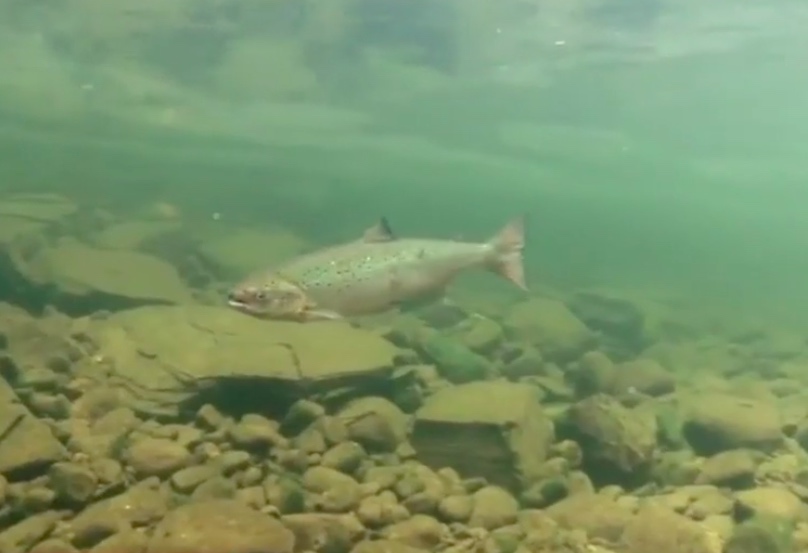forum
library
tutorial
contact

Feds' Snake River Dams Reports
Do Not Endorse Removal Plan
by James Leggate
ENR Northwest, July 13, 2022
|
the film forum library tutorial contact |

|
Feds' Snake River Dams Reports
by James Leggate
|
Biden administration releases studies tied to breaching proposals
for Washington state (US Army Corps of Engineers) dams
 The Biden administration released a pair of reports related to a proposal for a major four-dam removal project in Washington state, but stopped short of endorsing a specific multibillion-dollar plan.
The Biden administration released a pair of reports related to a proposal for a major four-dam removal project in Washington state, but stopped short of endorsing a specific multibillion-dollar plan.
The four dams on the lower Snake River in southeastern Washington have been eyed for possible breach or removal to help local salmon populations return to sustainable levels.
One of the reports, prepared by consulting firm E3 for the US Dept. of Energy's Bonneville Power Administration, examines potential ways to replace power production that would be lost without the dams' hydroelectric plants
It estimates the cost of replacing the plants with clean and reliable energy sources at between $11.2 billion and $19.6 billion.
The second assessment released by the White House Council on Environmental Quality on July 12 is a draft National Oceanic and Atmospheric Administration (NOAA) report on rebuilding salmon and steelhead trout stocks in the Columbia River basin.
Last month, Washington Gov. Jay Inslee released a separate draft report examining the impacts of the dam removals and the costs associated with those efforts. It estimated the cost of replacing the dams' power generation with other renewable sources somewhere between $9.3 billion and $18.6 billion.
The E3 study finds that replacing the dams' energy production will require between 2,300 and 4,300 MW of replacement sources. The need to have sufficient resources to meet demand and the need to replace zero-carbon energy are the biggest cost drivers, according to the BPA report. But it adds that emerging technologies such as hydrogen, advanced nuclear and carbon capture may be able to help limit costs, alhough it is not clear when those technologies might be ready for commercial-level deployment.
"As the region continues to embrace the health and cost-savings of a decarbonized power sector and to further enhance its supply of clean energy, the E3 study can help inform long-term planning decisions, including to limit the impact to ratepayers," Kathleen Hogan, DOE deputy under secretary for infrastructure, said in a statement.
The NOAA report describes breaching the four lower Snake river dams as "essential" to help the four species of salmon that use it, all either threatened or endangered under the Endangered Species Act. Breaching the dams would decrease travel time and reduce stress for the fish, it states.
The breaching proposal has support from environmental advocates, regional tribal governments including the Nez Perce and Yakama Nation and the NW Energy Coalition, an organization of energy sector groups and other members advocating for renewable energy.
"Decision-makers already have enough information on energy system development for the region to decide that it is time to move forward on [lower Snake River] dam removal and launch a comprehensive energy replacement planning process that will unleash market forces in the development of new, clean energy resources," Nancy Hirsh, executive director of NW Energy Coalition, said in a statement.
As ENR previously reported, the four dams are owned and operated by the U.S. Army Corps of Engineers Walla Walla District and date to the 1960s and ‘70s.
Advocates have called for their removal previously to help restore declining salmon populations in the river, but the proposal has drawn opponents from various industries that have come to rely on the river, which is navigable for more than 100 miles between Lewiston, Idaho, and Tri-Cities, Wash., and used for irrigation and other services as a result of the dams.
The river system provides a lower-cost method of moving wheat from the region compared to other transportation options. Washington Association of Wheat Growers President Howard McDonald said in a statement that "it would be incredibly difficult and drastically more expensive to transport wheat" without the waterways.
"The impact of dam breaching is wide-reaching and long-lasting," McDonald said. "The oversimplified recommendations in this report won't achieve salmon population recovery goals but will surely devastate the wheat industry."
Inslee and Sen. Patty Murray (D-Wash.) are expected to release recommendations for the dams this year following a comment period, which ended July 11. But even if they do recommend breaching the dams, or removing them fully, any action would require approval from Congress. Proposals to breach face opposition from some lawmakers, particularly Republicans from the Northwest.
"Only Congress--not the president--has the authority to remove these dams," Sen. Jim Risch (R-Idaho) said in a statement. "Now more than ever, I remain adamantly opposed to breaching the dams on the lower Snake River."
In addition to any work to replace power generation infrastructure, breaching the dams is expected to cost as much as $2 billion, according to Inslee's draft report, with infrastructure replacement for other services that rely on the river elevating the price to between $10.3 billion and $27.2 billion, the report estimates.
learn more on topics covered in the film
see the video
read the script
learn the songs
discussion forum
